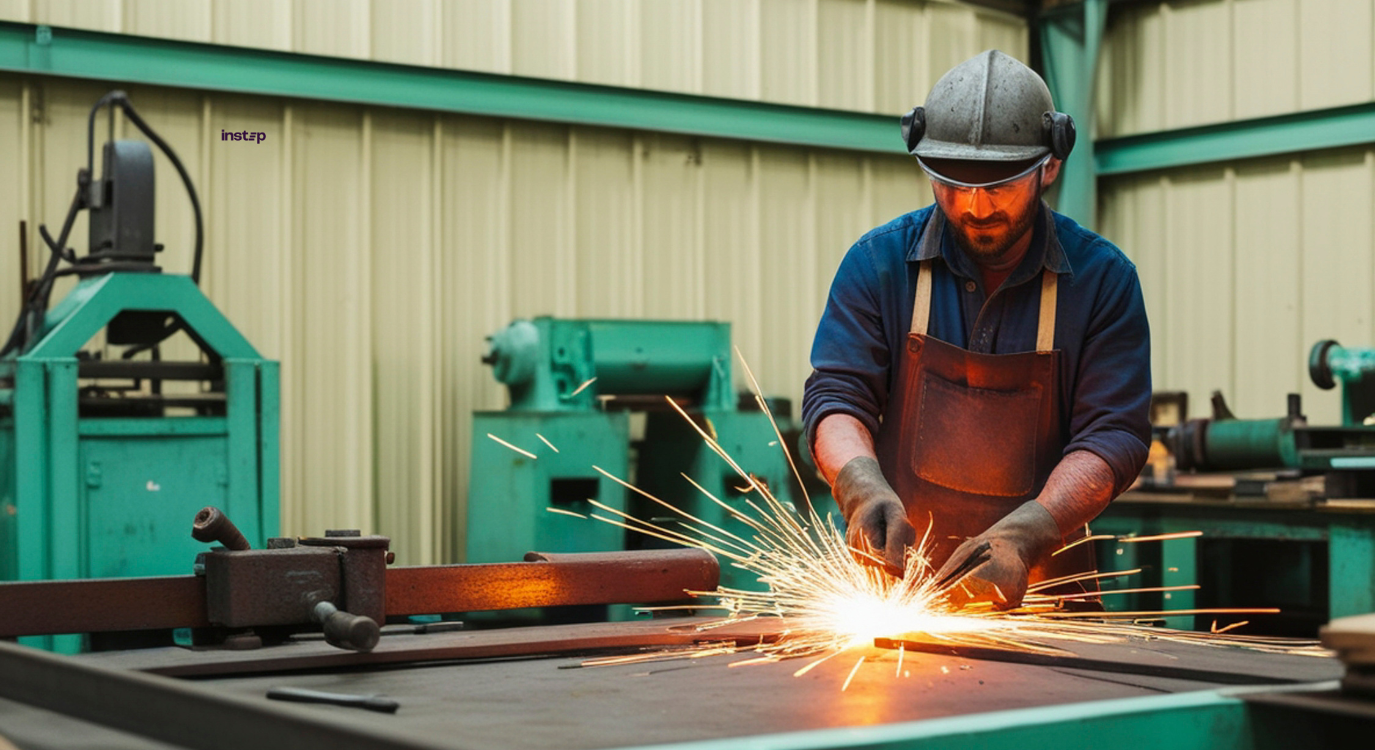
Male allyship is essential to help women in the workplace, yet despite the growing awareness of gender equality, a recent study shows that not enough men are stepping up as allies.
To be clear and upfront, I’m writing this article as a man, and my instinctual reaction to this research is one of alarm. Surely, in 2025, we’re now at a place where men can proudly champion a fair and inclusive working environment?
Another feeling, as a man, is one of defence. ‘But I’m not sexist’, you may think. But ask yourself, as I will too, the following:
‘Do I proactively challenge sexist behaviour and gender biases, in and out of the workplace?’
‘Do I use my position to support the career advancement of female colleagues?’
‘Do I actively listen to learn about the experiences of women, and ask how I can offer support?’.
To put it bluntly, gender equality is not possible without support from women and men alike. And looking at the evidence presented to us, it’s clear men need to do more.
But this article is far from a scathing attack; it’s an exploration into the ‘why’ and ‘how’ men should and can become effective allies to women to support a fair, inclusive work environment.
Let’s start by defining what male allyship is.
What is Male Allyship?
Male allyship involves men actively supporting and advocating for women in the workplace.
It means recognising gender biases, challenging discriminatory behaviours, and using one’s influence to promote equality.
Effective male allies listen to women’s experiences, amplify their voices, and take concrete actions to address gender disparities.
What are Common Misconceptions about Male Allyship?
- Allyship is a One-Time Act: True allyship requires ongoing commitment and consistent actions over time.
- Allies Should Speak for Marginalised Groups: Effective allyship involves amplifying the voices of marginalised groups, not speaking on their behalf.
- Awareness is Enough: Simply being aware of the issues is not sufficient. Allyship involves taking concrete actions to address and challenge systemic inequalities.
- Allyship is Friendship: Having friends from marginalised groups does not automatically make someone an ally. Allyship is about advocacy and using one’s privilege to support those in less advantaged positions.
Why Male Allyship Matters
Male allyship matters because it can significantly impact women’s career advancement and job satisfaction.
When men advocate for gender equality, it helps create a more inclusive and productive work environment.
Research shows that organisations with strong male allyship see better outcomes in terms of diversity and inclusion.
How Can Men Be Better Allies to Women?
Educate Yourself – Learn about gender issues and the challenges women face at work. Attend workshops and read up on gender equality.
Speak Up Against Discrimination – Challenge sexist remarks and behaviours. Use your voice to support women and call out discrimination.
Mentor and Sponsor Women – Offer mentorship and sponsorship to women colleagues. Help them navigate their careers and provide opportunities for growth.
Promote Inclusive Policies – Advocate for policies that support gender equality, such as flexible working hours and parental leave.
What is the Impact of Male Allyship?
The impact of male allyship is profound.
It can lead to increased representation of women in leadership roles, higher job satisfaction, and improved organisational performance.
Male allies help create a culture of inclusion where everyone feels valued and supported.
Examples of Effective Allyship in the Workplace
It’s not just gender inequality that highlights the importance of allyship. Here are two examples of how company’s have implemented initiatives that have reshaped workplace culture:
Johnson & Johnson’s LGBTQ Allyship Initiative
Johnson & Johnson implemented a comprehensive LGBTQ allyship initiative that focused on increasing awareness and sparking conversation around allyship for the LGBTQ community.
This programme included several key components, including putting on workshops, creating resource groups, running awareness campaigns, and generating new workplace policies.
Educational workshops were organised to educate employees about LGBTQ issues, the importance of allyship, and how to be effective allies. These sessions cover topics such as understanding LGBTQ terminology, recognising and addressing biases, and creating inclusive environments.
The Employee Resource Groups (ERGs) provided a safe space for LGBTQ employees and allies to connect, share experiences, and support each other. These groups serve as a platform for advocating for LGBTQ rights and promoting inclusive policies within the company.
Additionally, Johnson & Johnson ran awareness campaigns to highlight the importance of LGBTQ allyship. These campaigns included events, social media initiatives, and internal communications that encourage employees to become active allies.
The company has also implemented policies that support LGBTQ employees, such as non-discrimination policies, benefits for same-sex partners, and gender-neutral restrooms.
These policies have helped to create a more inclusive and supportive workplace for everyone.
Kroger’s Resource Group for Black Allies
Kroger established a resource group specifically designed to support Black employees and promote allyship within the company.
This group provides a platform for open and honest discussions about the challenges faced by Black employees, and these discussions helped raise awareness about racial issues and, in turn, created a culture of understanding and support.
The group also offers mentorship programmes that pair Black employees with experienced mentors who can provide guidance, support, and career development opportunities. These programmes help Black employees navigate their careers and achieve their professional goals.
Additionally, the group focuses on providing career development opportunities for Black employees, offering workshops, training sessions, and networking events that help employees build skills, gain knowledge, and advance their careers.
The resource group also advocates for policies and practices that support Black employees and promote racial equality within the organisation. This includes initiatives to address systemic biases, improve diversity in leadership, and create a more inclusive workplace culture.
Both Kroger, and Johnson & Johnson, have shown that action, not passive leadership, equates to the allyship needed within the workplace to actual create a change.
It shows that a change in company culture is needed for businesses to create true gender equality, but naturally this is easier said than done.
Let’s examine some of the barriers which prevent men from becoming allies to women in the workplace.
What are some Common Challenges in Implementing Male Allyship?
A lack of understanding and awareness can hinder the effectiveness of allyship, as employees may not fully grasp its importance or know how to practice it effectively without proper education and training.
Additionally, the fear of making mistakes can lead to inaction, as some individuals believe they must be perfect allies and are afraid of errors.
Performative allyship, where actions are taken for appearances rather than genuine support, can undermine trust and the overall effectiveness of allyship efforts.
Furthermore, implementing allyship often requires a significant shift in organisational culture, which can be met with resistance from those who are comfortable with the status quo.
How can I Implement Male Allyship in my workplace?
Here’s seven things you can do, from today, to start promoting male allyship within your workplace:
- Educate Yourself and Others: Organise training sessions to help everyone understand what allyship means and how unconscious bias affects gender dynamics. Provide resources like articles, books, and videos specifically focused on gender equality to encourage continuous learning.
- Create Safe Spaces for Dialogue: Make sure your workplace is a place where employees feel comfortable discussing issues related to gender equality. This can be done through regular meetings, forums, or informal gatherings where people can share their experiences and ideas.
- Lead by Example: Leaders should demonstrate inclusive behaviour by actively listening to the voices of women and advocating for their needs. When leaders show commitment to allyship, it sets a positive example for the entire organization.
- Promote Inclusive Policies: Review and update your workplace policies to ensure they support gender equality. This might include flexible working hours, parental leave, and anti-discrimination policies that specifically address gender issues.
- Recognise and Celebrate Gender Diversity: Acknowledge and celebrate events like International Women’s Day to raise awareness and appreciation for the contributions of women in the workplace. This helps create a more inclusive and respectful workplace culture.
- Encourage Allyship Actions: Motivate employees to speak up against gender discrimination and provide them with the tools and support to do so effectively. This can include training on how to address gender bias and creating channels for reporting and discussing issues.
- Measure and Improve: Regularly assess the impact of your allyship initiatives. Use surveys, feedback, and performance metrics to understand what’s working and where improvements are needed. Be open to making adjustments to ensure your efforts are effective and sustainable.
Are you ready to become a catalyst for change?
I want to reiterate that this is not an attack on men.
The word ‘ally’ may have connotations of ‘war’, but this is not about sides, and men are certainly not the ‘enemy’. In fact, it’s not just men that need to be allies, but women too. Allyship works across the board; we need to be allies to other men as well and find ways of supporting each other.
We can’t achieve this without taking steps to gain a deeper understanding of one another and taking action to change company culture.
At Instep, we are committed to creating solutions for more effective leadership that helps managers lead with impact and better support those who feel unprivileged.
That’s why, in addition to our award-nominated Women+ in Leadership programmes, we are introducing a ‘Male Allyship’ programme to help male leaders manage effectively in a more inclusive environment.

This transformative ½ day programme is designed to equip men with a deeper understanding of challenges faced by women and practical strategies for active allyship in the workplace.
The specially curated content of this interactive Masterclass aims to enhance leadership by creating a culture of empathy, awareness, and practical engagement, equipping men to:
– Recognise and understand the landscape of gender equity and intersectionality.
– Advocate for women through mentoring and sponsorship.
– Address the root cause of gender inequity by examining and challenging patriarchal norms and behaviours.
To learn more about how our courses can help you (and your business), you can schedule a free education consultation with one of our experts.


